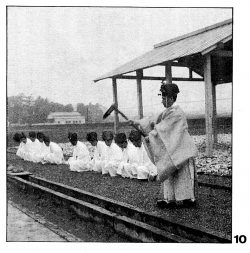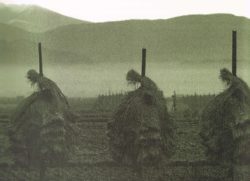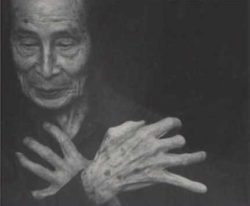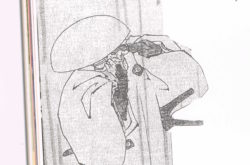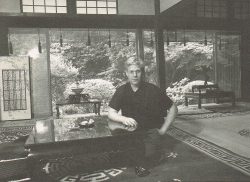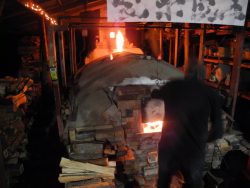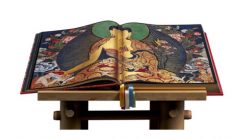Posts by Tyler Billman
Ashwini Bhat: The #claynomad at home
From India, Australia, Japan, to the United States, and elsewhere she pursued variety and experience, which for a time was recorded on her social media under the hashtag #claynomad.
Read MoreKeeping it Local: KI NO BI Kyoto Gin
On a crisp autumn morning, members of the broader Kyoto Distillery community gathered for the yearly harvest of yuzu, one of the local botanicals that creates the distinct flavor of KI NO BI.
Read MoreDaijosai and Shikinen Sengu: First Fruits Twice Tasted: Renewal of Time, Space and Man in Japan
Through its rituals, Japanese society marks both historical time, that is, progressive irreversible time, and natural time, the cyclic eternal rhythm. Historical time was originally reckoned by counting the years from the enthronement of each emperor.
Read MoreBizen’s Past and Present at the Miho
With warm ochre blushes and the subtle textures of exposed clay, the ceramic style born out of Okayama prefecture’s Bizen is humble while retaining potential for visceral expression. The Fall show at the Miho Museum in Shiga prefecture, “Bizen: From Earth and Fire, Exquisite Forms,” running from September 14th through December 15th represents a rare occasion to view a diverse showing of Bizen ware and one which represents ceramic work as it evolved from is cultural emergence in the Momoyama Period (1573-1615).
Read MoreLandscape of Memory
If one thinks of Japanese civilization as a great tree, the most brilliant blooms and succulent fruits adorned branches represented by the cities Nara and Kyoto. To fully appreciate those flowers and fruits one must follow the course of investigation right to the roots. These are firmly set in the soil of the inaka, approximately in English, ‘countryside.’
Read MoreA Child of All Time: Butoh Dancer Ohno Kazuo at 98
“The physical form I assume now is but the fruit of what I’ve inherited from those who have existed before me. What, you might ask, has become of our ancestors’ ideas and emotions? Where do you suppose our creativity springs from? There’s no way that it springs forth from our finite and limited knowledge of life.”
Read MoreEngawa
I slide my feet along the floor, the gray, smooth, one-hundred-and-fifty-year-old floor of plaster of lime and clay and gravel. I think of all of the feet, the generations of feet, that have shuffled across it, lived on it, of the people who’ve sipped tea standing in the same spot.
Read MoreCloudburst by Fujisawa Shuhei
In the daytime, Kakichi worked as a knife sharpener. He made his Edo rounds carrying a box of grindstones and files — the tools of his trade — and he sharpened kitchen knives, sickles, and scissors. Occasionally he was asked to set the teeth of a saw, and he carried the files for that purpose. And when a promising house caught his eye in the course of his rounds, he’d pay that house another visit in the dead of night.
Read MoreConcretizing the Japanese Dream: Alex Kerr on State-sponsored Vandals, True Romance and Contemporary Genii
“A revolution of a sort must take place but I am not at all sure that will happen in Japan. Part of the problem in Japan is that in some ways it’s very comfortable. Japan needn’t really do anything and could go right on as it is and no one would notice.”
Read MoreOn Learning Pottery in Japan
We never talked about our own work in aesthetic terms. I never asked, and they never volunteered. We never talked about the “significance” of our work, or its place in society. There seemed to be no place for the pained self-consciousness that afflicts so many American potters and students.
Read MoreTanuki! Tanuki!
The popularity of the tanuki has much to do with its humorous and winsome image. With its plump body, awkward movements and simple-minded trickery, the tanuki presents a comical, safe and manageable impression compared to the cunning fox, the other trickster.
Read MoreA Visual Treasure of Wisdom
By all standards, Murals of Tibet is not an ordinary book of Tibetan art history: it is itself a monument to Tibetan art.
Read More


